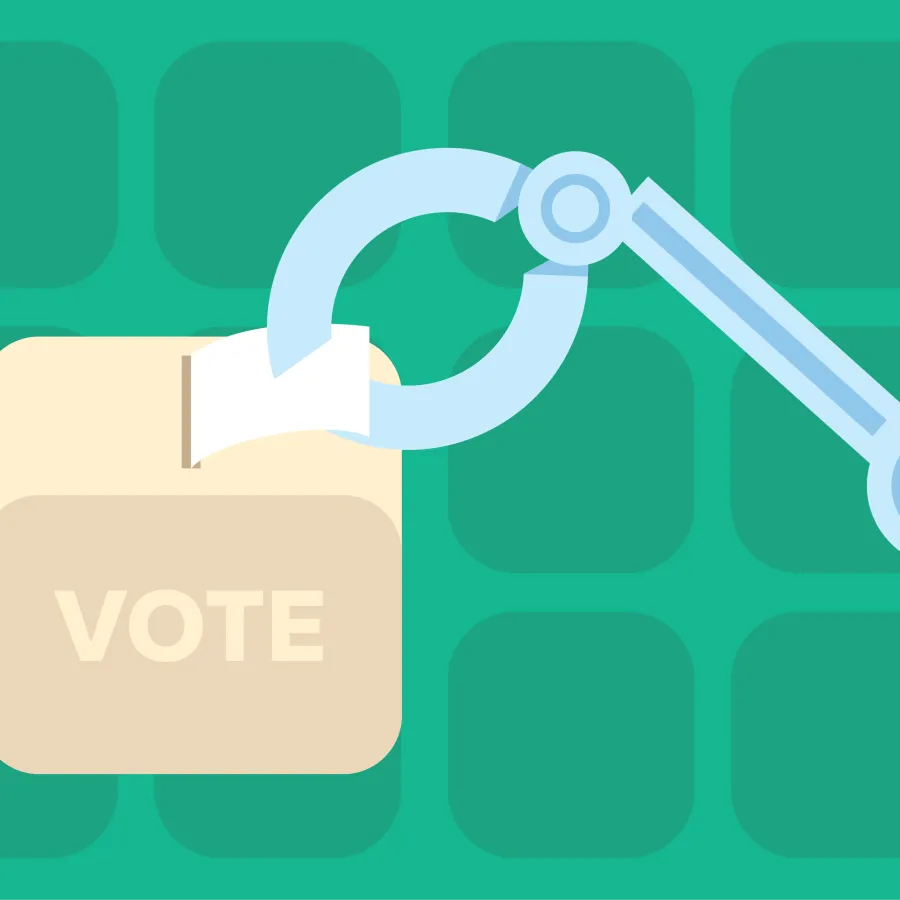Elections in the Age of AI
Democracy in Action
Illustration by Shawn Prairie.
Published July 17, 2024
Associate Professor of Computer Science Jordan Crouser and Associate Professor of Government Brent Durbin weigh in on how AI is altering the election process.
Overstimulating Voters
“We’re all being foie gras-ed with information in a way that we weren’t a decade ago,” says Crouser, who points out this isn’t a uniquely AI problem, though it is exacerbated by it. The constant barrage leaves us with less capacity and motivation to seek out relevant information and think critically about it.
Influencing the Public
From generating deepfakes to spreading misinformation, AI is being used to simultaneously sow distrust and reinforce echo chambers. “This is the election where the concern about deepfakes—in video, audio, and photo—and their propaganda possibilities are strongest,” Durbin says.
Altering the Campaign Process
AI is amplifying the scale and accelerating the pace at which campaigns can microtarget messages for different populations. “Campaigns have learned how to best identify who needs which message, and AI makes that identification faster and easier,” Durbin says.
Disrupting the Election Process
“Misinformation could also be used to influence people’s decisions about whether to vote at all,” Durbin says. For example, before the 2024 presidential primary, New Hampshire residents received robocalls mimicking President Biden’s voice, urging them to “save” their vote until the general election in November.
Equalizing Access to Information
Crouser points out that none of these problems are new. “Humans have been lying to each other for a very long time,” he says. “AI merely allows humans to lie using machines as the medium.” But he is excited about the potential for people to use AI to get easily digestible summaries of candidates and to seek conflicting viewpoints.
